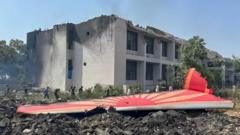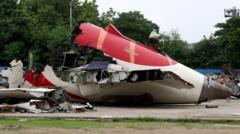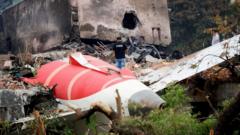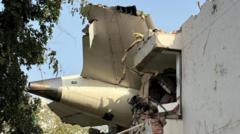As cities like Ahmedabad grow around crowded airports, the risks of aviation accidents escalate, revealing the urgent need for improved infrastructure and safety measures amidst India's burgeoning air travel demand.**
Urban Expansion and Aviation Risks: The Dangers of Congested Airports in India**

Urban Expansion and Aviation Risks: The Dangers of Congested Airports in India**
The tragic crash of an Air India flight highlights the perilous intersection of rapid urban growth and aviation safety in densely populated areas.**
As urban sprawl continues to envelop India’s most heavily trafficked airports, concerns surrounding safety are reaching critical levels. The recent crash of an Air India flight near Ahmedabad emphasizes the inherent dangers posed by the combination of increasing air travel and densely populated neighboring communities.
On June 19, 2025, in the midst of a family lunch, Bhavesh Patni witnessed a plane take off from a nearby airport only to crash moments later into a medical college campus, claiming the lives of all 241 on board and 34 on the ground. This horrifying episode serves as a stark reminder of the risks faced by residents living in close proximity to airport operations.
India's growing wealth and its aspirations to enhance air travel capability have resulted in a doubling of air passenger traffic over the past decade. Yet, this transformation strikes a jarring chord with the outdated urban infrastructures that struggle to keep pace with escalating demands. Airports have expanded, while surrounding neighborhoods have flourished, often with little regard for the potential hazards that accompany such development.
The incident in Ahmedabad highlights a national trend—cities sprawling relentlessly towards airport peripheries, which ultimately puts countless lives at risk during critical phases of flight. Notably, takeoff and landing remain the most accident-prone times, further amplifying the dangers of urban encroachment.
This precarious situation calls for immediate attention to urban planning and infrastructure development. As more citizens opt for air travel, which now has become a hallmark of India's economic promise, it is essential for policymakers to prioritize the creation of safety buffers and enhance the overall resilience of urban environments surrounding aviation hubs.
In summary, as India ambitiously pursues its aviation objectives, it must also confront the pressing need to safeguard its urban communities to prevent future tragedies that lie on the flight path of progress.






















